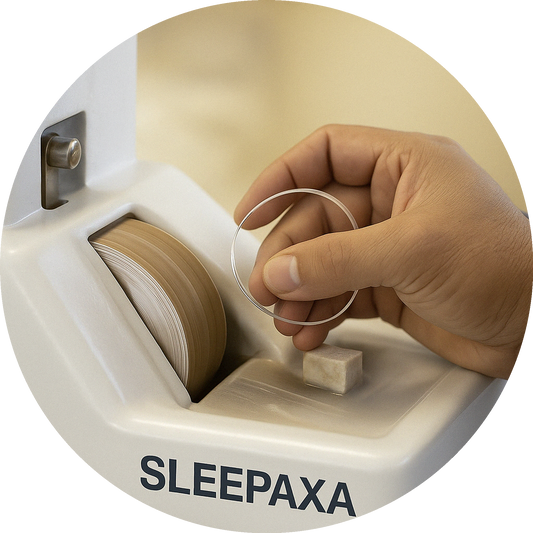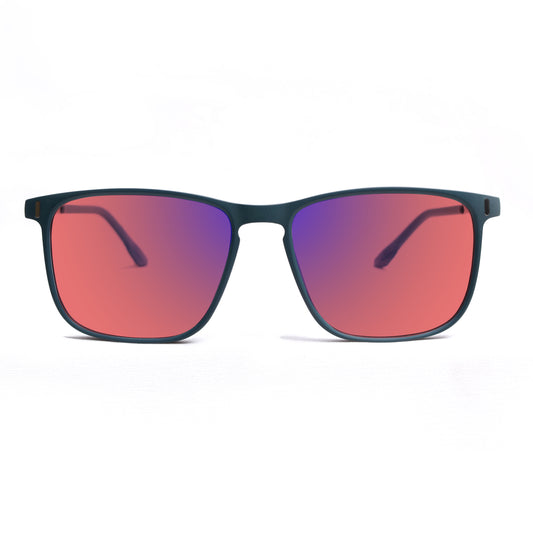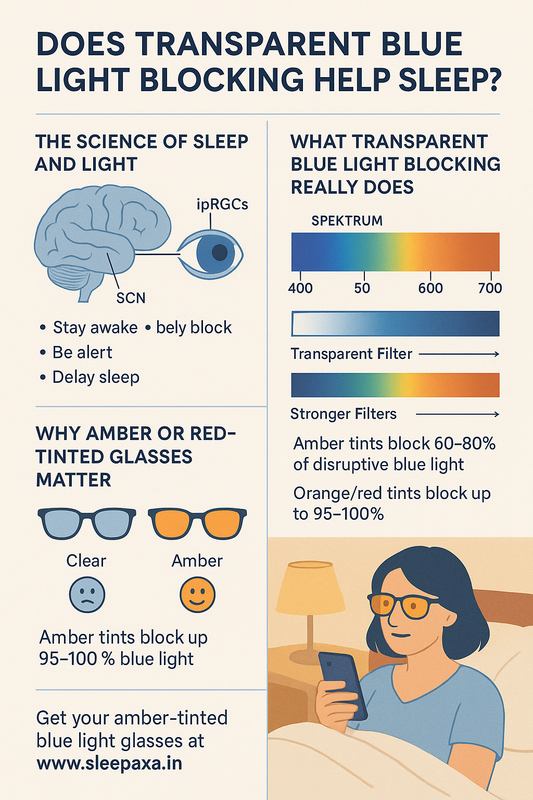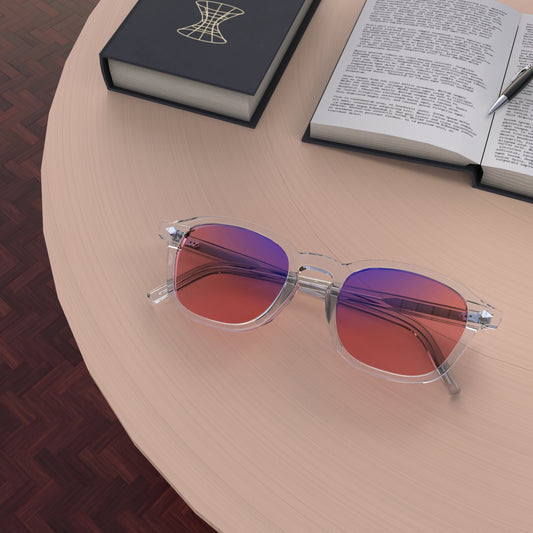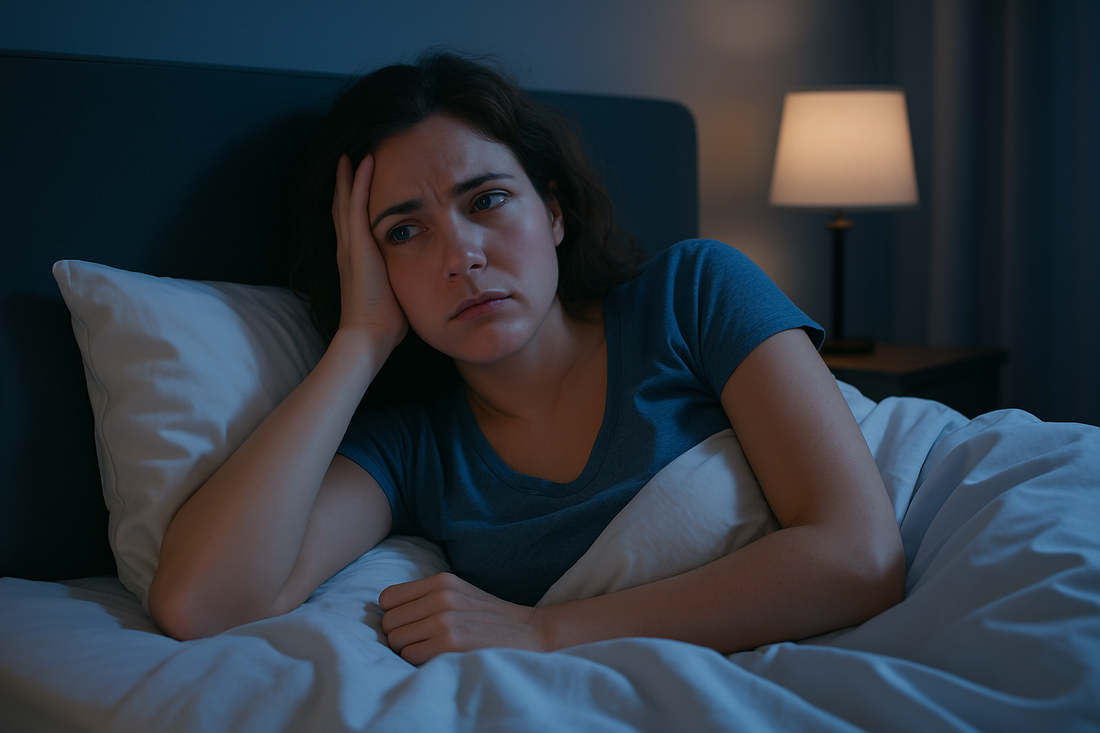
The Science Behind REM Sleep: How Digital Devices and Artificial Light Disrupt Your Sleep, Mood, and Productivity
Introduction
In today’s digital world, we are constantly exposed to artificial light from smartphones, laptops, LED screens, and even indoor lighting. While technology has improved our lives, it has also significantly disrupted our natural sleep-wake cycles. One of the most critical stages of sleep—REM sleep (Rapid Eye Movement)—is particularly affected by exposure to digital screens and artificial light at night.
In this blog, we’ll explore:
• What REM sleep is and why it matters
• How digital devices and artificial light affect REM sleep
• How sleep deprivation impacts mood and productivity
• Scientific insights into blue light exposure and its effects
• Solutions to protect your sleep cycle, including Sleepaxa Sleep Glasses
What Is REM Sleep and Why Is It Important?
The 5 Stages of Sleep
Sleep consists of Non-REM (NREM) sleep and REM sleep, which occur in cycles throughout the night.
1. Stage 1 (Light Sleep): Transition from wakefulness to sleep
2. Stage 2 (Deeper Sleep): Body temperature drops, heart rate slows
3. Stage 3 & 4 (Deep Sleep): Physical restoration, immune system strengthening
4. Stage 5 (REM Sleep): Brain activity increases, dreams occur, emotional processing happens
Why REM Sleep Matters
• Essential for memory consolidation and learning
• Helps regulate mood and emotions
• Affects cognitive function and problem-solving ability
• Improves mental and physical recovery
How Digital Devices and Artificial Light Disrupt REM Sleep
1. Blue Light Exposure from Screens Suppresses Melatonin
Melatonin, the sleep hormone, is naturally released when the sun sets, signaling your body to prepare for sleep. However, screens emit blue light (wavelengths of 450-495 nm), which tricks your brain into thinking it’s still daytime.
Scientific Evidence:
• Research from Harvard Medical School found that blue light exposure at night suppresses melatonin production by 50% and shifts sleep cycles by 3 hours.
• A study in the Journal of Clinical Endocrinology & Metabolism showed that LED screens reduce melatonin secretion more than traditional incandescent bulbs.
2. Artificial Indoor Lighting Mimics Daylight
• LED and fluorescent bulbs emit high-intensity blue light, keeping your brain alert.
• Bright room lighting before bed delays REM sleep onset.
3. Light Disrupts Circadian Rhythms
Your circadian rhythm (biological clock) is highly sensitive to light.
• Excessive artificial light exposure at night shortens REM sleep duration, leading to grogginess, fatigue, and mood swings.
• A 2022 study published in the journal Sleep Health confirmed that exposure to artificial light at night disrupts deep sleep and REM cycles.
4. Late-Night Screen Use Increases Cortisol (Stress Hormone)
• Digital screens stimulate the brain, triggering stress responses and increasing cortisol levels.
• High cortisol before bed delays REM sleep and increases nighttime awakenings.
5. Sleep Deprivation and Its Impact on Mood & Productivity
Lack of REM sleep affects:
• Memory & Focus: Difficulty concentrating and recalling information
• Emotional Stability: Increased anxiety, irritability, and mood swings
• Work Performance: Lower productivity, slower reaction times, and poor decision-making
• Physical Health: Increased risk of obesity, diabetes, and cardiovascular diseases
Solutions: How to Protect Your REM Sleep from Digital Devices and Artificial Light
1. Use Sleep Glasses to Block Blue Light
• Sleepaxa Sleep Glasses are designed with blue light-blocking lenses that filter out harmful light wavelengths and help maintain a healthy sleep cycle.
• Research-Proven: A 2017 study in the Journal of Applied Psychology found that wearing blue-blocking glasses 2-3 hours before sleep improved REM sleep duration by 40%.
• Ideal for: Gamers, office workers, students, and anyone using screens at night.
2. Reduce Screen Time Before Bed
• Avoid phone, tablet, and laptop use at least 90 minutes before sleep.
• Use night mode or dark mode on your devices.
3. Adjust Indoor Lighting
• Use warm light bulbs (2700K-3000K) instead of bright white LEDs.
• Install smart bulbs with a sunset mode to reduce blue light exposure in the evening.
4. Improve Sleep Hygiene
• Maintain a consistent sleep schedule.
• Use blackout curtains to prevent unwanted light from street lamps.
• Keep your bedroom cool and dark.
5. Avoid Late-Night Stimulation
• No caffeine or heavy meals 4-6 hours before bed.
• Engage in relaxation activities like meditation or reading a physical book.
Conclusion
REM sleep is essential for brain function, memory, mood regulation, and overall well-being. However, exposure to artificial light, digital screens, and late-night device usage disrupts sleep quality and reduces productivity.
By using solutions like Sleepaxa Sleep Glasses, reducing screen exposure before bedtime, and optimizing indoor lighting, you can significantly improve your sleep quality and overall health.
Prioritize your sleep, and your body will thank you!
